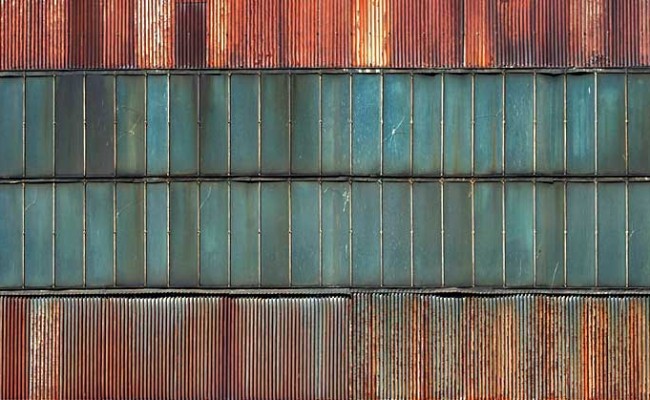The green strip of land projecting low from the bay
is signalled by the figures of four tall pines:
these sentinels can be sighted for guidance
from a great distance. The undulation of its hills
leads to a platform of broken rock,
the point where huge swells break.
Against the low cliff-fall, facing north
across the beach and toward the ranges,
is a settlement of faded boat-houses,
whose miscellany of patchwork materials
have withstood the ascension of innumerable tides.
Now abandoned, they might be dwellings
from an earlier time, surrounded by shellfish
and oddly coloured stones, their thresholds
opening directly onto the rising sun.
The path to the point is marked by a scattering
of impermanent hand-made memorials:
these are for surfers recently killed by the rocks
that lie concealed beneath the white line of swell.
The surfers are also perpetual to this place:
they arrive before dawn and follow the waves
until well after nightfall; on most afternoons,
when the tides are strong, a small crowd
gathers on the headland to watch them skate
across the lucid skin of a dangerous break.
There are also signs of an older residence:
here are the rows of erased tram-tracks
that once transported raw materials
to steam-ships from more developed nations.
And this is the place where a foreign novelist
once stood briefly before continuing his pilgrimage:
a part of my spirit will always remain here,
gazing like a ghost across this dark line of hills,
were his departing words. He lived for a time
above the neglected beach, and every evening
would follow the pathways through the swampy wetlands,
where a tea-coloured creek still spreads its labyrinth
of streams and marshes across a wide floodplain.
Today, when this area has been chosen for housing,
other inhabitants have attempted to establish
their presence. Protestors have discovered
that this was the oldest aboriginal burial site
on the east coast. A makeshift embassy
of corrugated iron was erected by the lagoon
where sea-birds gather, an aboriginal flag
permanently raised, a fire that would burn
in all weathers was lit. Often, when the moon
casts its avenue of light over the ocean,
the music of their ceremonies drifts with the smoke
across this silent landscape, and in the echo
of these rituals of mitigation there is the promise
of some healing, some relief. I visited this beach
late one afternoon at the onset of autumn,
after driving without purpose to the edge of town.
I simply halted where the bitumen ran out,
banking the car against the tussocky sand
raked by an approaching western wind.
The walkways delivered a procession of couples
with their children and dogs, freed for these few
brief hours of shared exercise and leisure.
I followed the path preferred by the foreign novelist,
with its views across mountain ranges
diluted in the shine of salt haze. The blustery wind,
which cancelled all sound, matted the tall grass
on the green hillside, yet from somewhere
the drone of machinery could be heard.
This was the site selected for development,
a waste land as yet unfenced and undisturbed.
As I mounted the slope a strange and vivid
tableau presented itself: lying on his side,
and almost concealed in the long grass,
was the prone figure of an aboriginal man,
impassive and apparently relaxed. Before him
stood the roaring engine of the bulldozer,
the only purpose of which, it seemed,
was to sweep this man from the earth,
where he lay protecting the invisible bones
of a forgotten ancestor. There was a perfect
stillness in the scene, enacted under bright sunshine,
and muted by the teeming wind and machine noise,
of which I was the only witness. Slowly the light
died across the dunes, as the black range once again
imposed its shadow on the townships below.
The last figures vanished from the beach,
and the grey sea continued its heaving motion.
I did not stay long at this turning point:
there were no good omens to be discovered.
Without reflection or further thought, I started
the engine and took the road back into town.
The point



